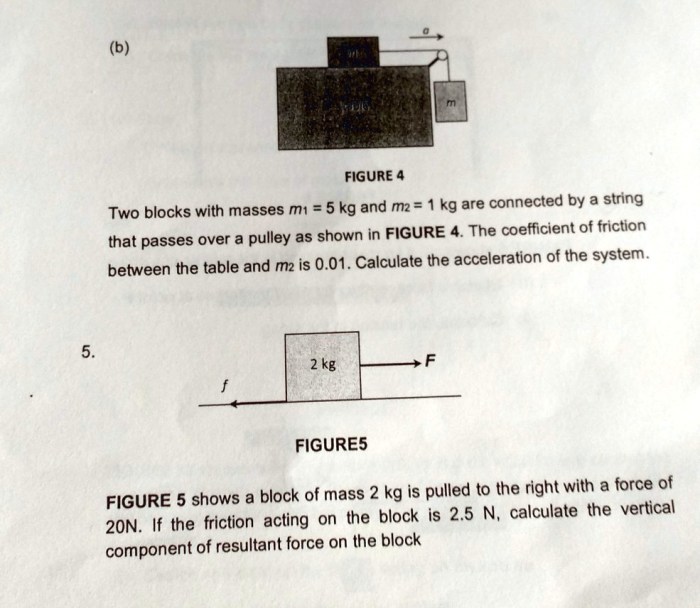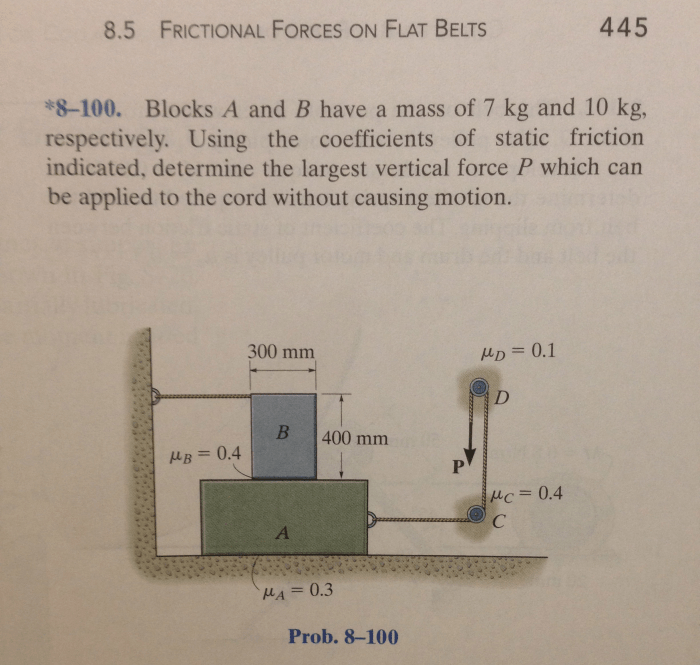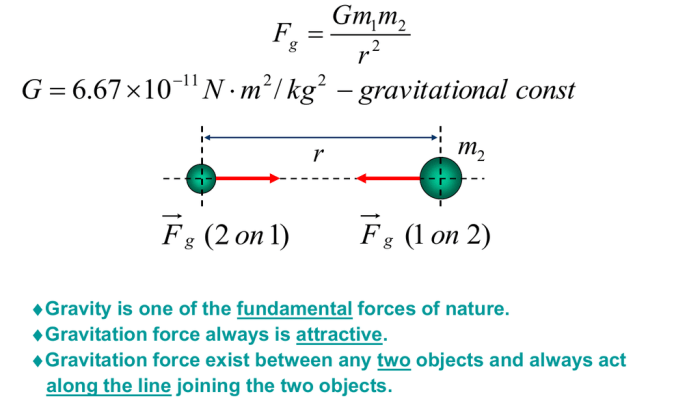Let the mass of the block be 8.5 kg: a seemingly straightforward statement that opens up a realm of scientific inquiry and practical applications. Mass, a fundamental property of matter, plays a pivotal role in our understanding of the physical world.
From determining the weight of objects to measuring the mass of celestial bodies, the significance of mass extends far beyond everyday life.
This comprehensive exploration delves into the concept of mass, its units of measurement, and its diverse applications. We will analyze the implications of the given mass value of 8.5 kg, examining its potential significance in calculations and experiments. By the end of this journey, you will gain a deeper appreciation for the multifaceted nature of mass and its profound impact on our understanding of the universe.
Mass and its Significance: Let The Mass Of The Block Be 8.5 Kg

Mass is a fundamental property of matter that describes the amount of matter in an object. It is an intrinsic property that remains constant regardless of the object’s location or motion. Mass plays a crucial role in various physical calculations and affects the behavior of objects in numerous ways.
Importance of Mass in Physical Calculations
- Newton’s Laws of Motion:Mass is a key factor in determining the force, acceleration, and motion of an object. According to Newton’s second law (F = ma), the force acting on an object is directly proportional to its mass and acceleration.
- Gravitational Force:Mass is directly related to the gravitational force between two objects. According to Newton’s law of universal gravitation (F = Gm1m2/r^2), the gravitational force between two objects is directly proportional to their masses.
- Energy Calculations:Mass is a fundamental component in the famous equation E = mc^2, which relates energy (E) to mass (m) and the speed of light (c). This equation highlights the equivalence of mass and energy.
Effects of Mass on Objects’ Behavior
- Inertia:An object with greater mass has more inertia, meaning it resists changes in motion more strongly. This property is crucial in understanding the motion of objects, such as the braking distance of vehicles.
- Momentum:Momentum (p) is a measure of an object’s motion and is calculated as the product of its mass (m) and velocity (v): p = mv. Objects with greater mass have higher momentum, making them harder to stop or change direction.
- Gravitational Effects:Objects with greater mass experience stronger gravitational forces. This influences phenomena such as the tides, the motion of planets around the Sun, and the behavior of objects in space.
Determining Mass: Units and Measurements

Mass, a fundamental physical property of matter, quantifies the amount of matter present in an object. The standard unit of mass in the International System of Units (SI) is the kilogram (kg). The kilogram is defined as the mass of the International Prototype Kilogram, a cylinder of platinum-iridium alloy kept at the International Bureau of Weights and Measures in France.
Units of Mass
The kilogram is the base unit of mass in the SI system, but other units of mass are also used, including the gram (g), milligram (mg), and tonne (t). The relationships between these units are as follows:
- 1 kilogram = 1000 grams
- 1 gram = 1000 milligrams
- 1 tonne = 1000 kilograms
Measuring Mass
Mass can be measured using various methods, including scales and balances. Scales are devices that compare the weight of an object to a known mass. Balances, on the other hand, compare the mass of two objects directly.
Scales
Scales work by balancing the weight of an object on one side of the scale with a known mass on the other side. The known mass is adjusted until the scale is balanced, indicating that the weight of the object is equal to the known mass.
Balances
Balances work by comparing the mass of two objects directly. The objects are placed on opposite sides of the balance, and the balance is adjusted until the two sides are balanced. When the balance is balanced, the masses of the two objects are equal.
Accuracy and Precision of Mass Measurements
The accuracy of a mass measurement refers to how close the measured value is to the true value. The precision of a mass measurement refers to how consistent the measurements are when repeated. A mass measurement can be accurate but not precise, or precise but not accurate.
The accuracy of a mass measurement depends on the calibration of the scale or balance used. The precision of a mass measurement depends on the sensitivity of the scale or balance.
Mass and its Applications

Mass plays a crucial role in our daily lives, scientific research, and technological advancements. Its applications extend beyond weighing objects to encompass a wide range of fields.
In everyday life, mass is essential for activities such as weighing groceries to ensure accurate pricing, determining postage costs for mailing, and measuring ingredients for cooking or baking. It also has implications for health and fitness, as body mass index (BMI) is a measure of weight in relation to height, providing insights into an individual’s overall health.
Mass in Scientific Research
In scientific research, mass is a fundamental property used to measure the quantity of matter in objects. It is employed in various fields, including:
- Astronomy:Measuring the mass of planets, stars, and galaxies helps scientists understand their composition, structure, and gravitational interactions.
- Chemistry:Mass spectrometry is a technique used to determine the mass-to-charge ratio of ions, providing information about the elemental composition and molecular structure of substances.
- Physics:Mass is a key parameter in Newton’s laws of motion, which describe the relationship between an object’s mass, velocity, and acceleration.
Mass in Technologies, Let the mass of the block be 8.5 kg
Mass measurements are also utilized in various technologies:
- Weighing scales:Used in industries, laboratories, and homes to measure the mass of objects.
- Mass spectrometers:Employed in analytical chemistry and medical diagnostics to identify and quantify substances based on their mass-to-charge ratio.
- Inertial navigation systems:Used in aircraft, ships, and submarines to determine their position and orientation by measuring acceleration and angular velocity, which are influenced by mass.
Mass in Context: The Given Value of 8.5 kg
The given mass value of 8.5 kg represents a specific quantity of matter, providing a reference point for understanding the physical properties and interactions of an object. This mass value can have significant implications for potential calculations or experiments, as it influences various physical phenomena and determines the behavior of the object in different situations.
Implications for Calculations
The mass of 8.5 kg can be utilized in various calculations related to mechanics, gravitation, and energy. For instance, it can be used to:
- Calculate the weight of the object using the formula: Weight = Mass × Gravity (where Gravity is approximately 9.8 m/s² on Earth).
- Determine the object’s inertia, which resists changes in motion, using the formula: Inertia = Mass.
- Calculate the kinetic energy of the object when it is in motion, using the formula: Kinetic Energy = 0.5 × Mass × Velocity².
Implications for Experiments
In experimental setups, the mass of 8.5 kg can be a crucial factor in designing and interpreting results. It can influence:
- The force required to accelerate or decelerate the object, according to Newton’s second law: Force = Mass × Acceleration.
- The gravitational force between the object and other masses, as described by Newton’s law of universal gravitation.
- The amount of energy required to raise the object to a certain height, as determined by the formula: Potential Energy = Mass × Gravity × Height.
Contextual Relevance
The mass of 8.5 kg may be relevant in various contexts, including:
- Engineering and construction, where it can represent the mass of materials used or the load-bearing capacity of structures.
- Transportation, where it can indicate the mass of vehicles, cargo, or passengers.
- Manufacturing, where it can represent the mass of raw materials, finished products, or packaging.
By understanding the significance of the given mass value and its implications for calculations and experiments, researchers and practitioners can accurately assess the physical properties and behavior of objects, leading to informed decision-making and effective problem-solving.
User Queries
What is the significance of mass in physics?
Mass is a fundamental property of matter that determines its inertia and gravitational interactions. It plays a crucial role in calculations involving motion, energy, and gravity.
How is mass measured?
Mass is typically measured using scales or balances, which compare the force exerted by gravity on the object to a known mass.
What are some examples of how mass affects objects’ behavior?
Mass influences an object’s acceleration, momentum, and gravitational pull. Heavier objects have greater inertia and are more difficult to accelerate or stop. They also exert a stronger gravitational force on other objects.
What are some applications of mass measurements?
Mass measurements are used in a wide range of applications, from determining postage to measuring the mass of atoms and planets. They are also essential in fields such as engineering, medicine, and manufacturing.

